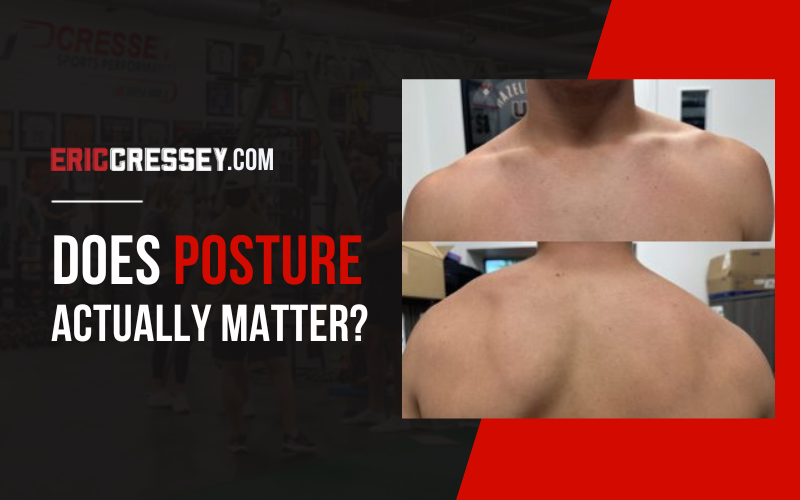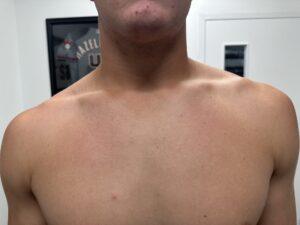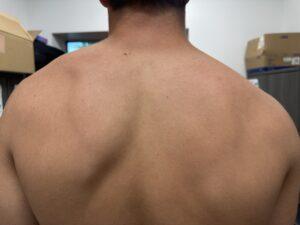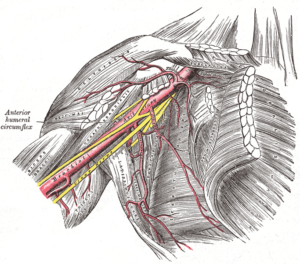
Does Posture Actually Matter?
You often find people who claim that static posture doesn’t matter. In many cases, their argument is based on research that doesn’t demonstrate a definitive relationship between posture and pain. While I’ve got an extensive rebuttal to this opposing viewpoint, the easiest way to answer is to say that posture alone doesn’t perfectly relate to pain or performance. Rather, it’s the interaction of posture with both positions and load that matters.
Take this downsloped clavicle, as an example. Someone with this posture might live a completely normal life as a track and field runner, or someone who sits in the desk all day. However, throw this posture (scapular/clavicular depression) into the overhead athlete community, and the positions and loads encountered change dramatically.
If you’re familiar with the Postural Restoration Institute school of thought, it shouldn’t surprise you that this presentation was part of a larger left AIC/right BC pattern in a right handed pitcher, but let’s just focus on this specific location for the sake of making a point with this article.
You can’t tell me that the neurovascular bundle isn’t compromised between the clavicle and first rib in this scenario. Or, it could happen more distally, under the attachments on the coracoid process of the scapula.
There’s a reason we see thoracic outlet syndrome far more in baseball players than other athletic populations.[bctt tweet=”Posture loads the gun, but positions and loads specific to an athlete’s sport pull the trigger.”]
This is one reason why I went to great lengths to dig in on posture in my “How Posture Impacts Pain and Performance” webinar as part of my Sturdy Shoulder Solutions resource. If you want to understand movement and its role in dysfunction and pain, you’d be crazy to overlook where people start.






